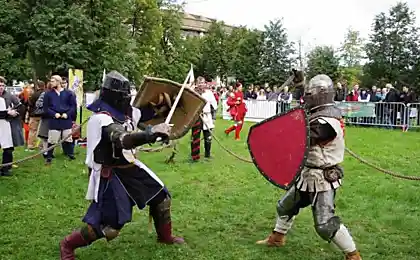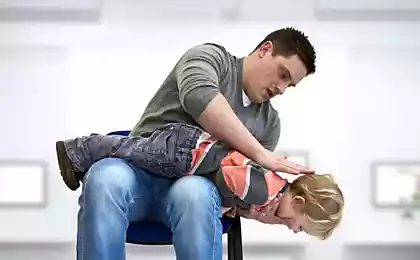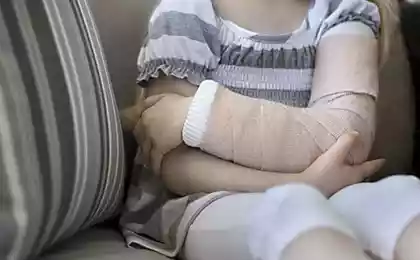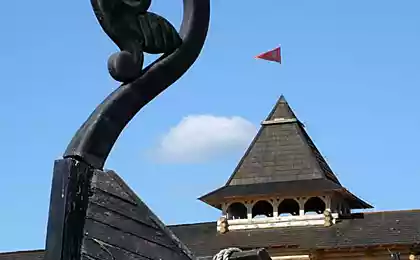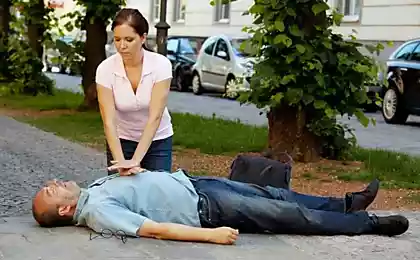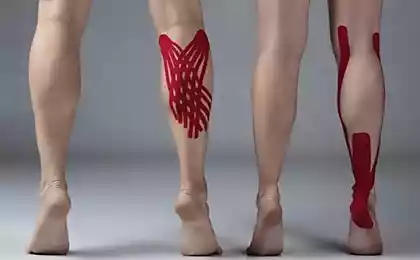1192
Kiev ambulance. History and Everyday Life
1. About the service in our hospitals and medical sector There is a lot of talk. Including about first aid, although it is a separate office and "lives" it away from hospitals. About half a year ago I had the opportunity to look at the work of the emergency from the inside. I can not say that I filmed exactly what I originally imagined: as usual, from the inside it looks is not what it seems. But I learned a lot of new information for myself, who will try to share with you today.
29 photo + accompanying text.
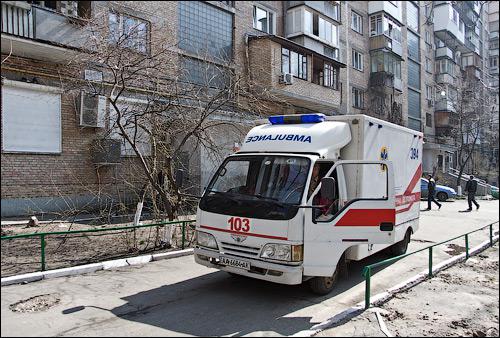
2. Kiev ambulance station this year celebrated 110 years - is one of the oldest medical institutions in the city and on the specifics of their work, the organizational and functional structure, methods of work - the first in Ukraine and among the top ten such institutions in Europe.
Brief History
The origin of emergency medical care in Kiev can be traced to 1881, when the Company's initiative was organized by the Kiev doctors' Circle doctors to a doctor's duty ", which in the same year opened on Khreshchatyk point night duty. It voluntarily attended two dozen doctors. Activity item was mainly a philanthropic character. Help in case of accidents and injuries is free, and paid visits.
Gradually, the number of complaints increased, and after some time the item was no longer able to meet the increasing needs of the people of Kiev in urgent need of assistance. In addition, some doctors refused unprofitable calls, while others were fired.
Thus, in the city of overdue problem of organizing a full ambulance station. And June 30 1902 (old style) on the money collected from the population at charity evenings, membership fees, donations from philanthropists, made the City Council in Kiev began operating ambulance station, then called the rescue. She is located in cramped and unsuitable premises of the house on the street. Pirogov, 6, which were equipped with desk, room duty doctors, ambulance, pharmacy, stationery, etc. On the opening day the station had before Austrian horse carriage, purchased with donations. Station staff then consisted of the doctor's staff (head of the doctors on duty and 8), 5 nurses, 3 cabbies, street sweeper, carrier and economy. Daily from 9 am to 23 pm 2 doctors on duty. On the night of 1 doctor remained on duty. Always ready in all weather conditions was a horse-drawn carriage, which in 1-2 minutes after the call for help to leave on a call. Her place immediately took another coach. In case of fire with a large number of victims at the scene were sent additional medical supplies, and convened all the staff station.
At the rescue station:
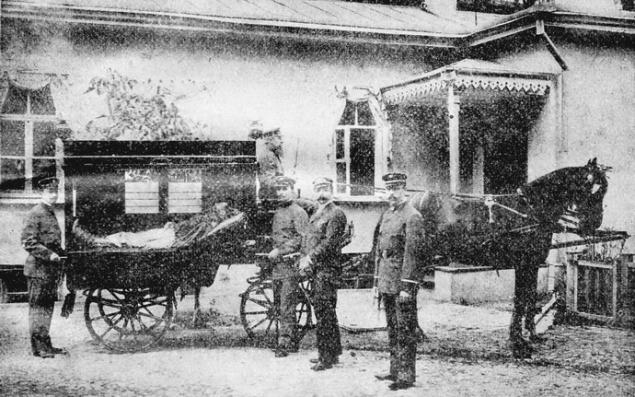
3. For the first six months of the station is made of 2 thousand. Out, in 1903 - 4, 5 thous., In 1905 - 5, 1 ths.
In 1913, the Company acquired on donations 4 car and asked the City Duma with a request to oblige all the crews in the city to release expensive cars and ambulances (previously this was only fire brigades). During the Civil War, during street fighting health professionals station actively provided assistance to the wounded. Despite the devastation, unemployment, hunger and lack of funding the ambulance Kiev continued to function. In 1919 he published a decree about nationalization of the ambulance station, but funding remained scanty. In this regard, Gubernia Executive Committee in 1923 has allowed the collection of donations among Kyiv residents and businesses in support of the ambulance, as well as to the paid transportation of patients.
Popularity ambulance is constantly increasing. If in 1924 was carried out 6, 3 thous. Visits, then in 1933 they were carried out for 16, 5 thousand. Available hardware has not given the possibility of further normal operation of the station and in the prewar years, organized the new control room. During these years, it originates the idea of specialization ambulances and in 1932 at the Kiev station was organized by the obstetric and in 1934 - Pediatric teams. In the postwar years, there are psychiatric, antishock, hematology, toxicology, pediatric and others. Specialized teams.
First aid station at the time of its placement on the street. Vladimir, 33 (1907-1912 gg.). Now at this point is the building of the SBU.

3. In 1940, at the station every day went 18 ambulances, worked 270 people, of whom 49 were doctors. It was carried out 53, 8 ths. Departures.
During the Nazi occupation the station was not working. Equipment, property, equipment, workshops, records have been looted or destroyed. Survived only room. After the liberation of Kiev in 1943, the station has resumed its work. She was isolated 1 truck and 1 wagon. Calls served mostly on foot. Station staff consisted of only 9 people. About 100 plant personnel were killed during the war. Everything had to start from the beginning ...
In-house team restored the station premises, workshops and garage. In 1945-46. the station received 11 trucks. Since 1948 began arriving ambulances GAZ-AA, and since 1953 - ZIM cars and buildings and structures. In this difficult time for the Kiev station staff is headed by Natalia Andreevna Lengauer. Under her leadership, the station has evolved into an advanced medical facility not only in Kiev but also in the FSU. The station had a weight and abroad. We came here to study and learn from the experience from many cities of Ukraine, the Union and other countries. Since 1960, Kiev ambulance station become Republican, and since 1965 - All-Union school of excellence.
Natalya Andreevna Lengauer:

4. Meanwhile, Kiev and grew more acute becomes the problem of the remoteness of the new residential community to the station. This is especially felt on the Left Bank. Through perseverance NA Lengauer in 1957 on the street. Diagonal (now Gagarina ave.) For the first time in Kiev organized substation ambulance (now the substation №2 on ul. Sergienko, 6). In subsequent decades, in Kiev offers more than a dozen stations, which are now in every area of the city. In 1977, the central station is divided into two sub-station: №1 and №13. Substation №1, which houses the control room, now located on the street. Bohdan Khmelnytsky, 37B, where it relocated in 1963. The new building was built on an individual project, had 42 rooms, a conference hall for 300 people, a library, dining room, dressing room, garage, car wash and unique at the time the central control room, Equipped with the latest equipment.
In 1962, an ambulance has provided 47 mobile teams of 5 for the year was carried out 323, 8 ths. Departures. In 1975 already it has been performed 556, 4 th. Exits (100 times more than the time of the station).
In the period from 1960 to 1990. It is spread each year from 5 to 15 new methods of diagnosis and treatment, and from 8 to 25 staff rationalization proposals station. Also employees of the station is constantly engaged in research activities. Their development and achievements have been the subject of a city, republican, union and international conferences. In 1987, at the Kiev station for the first time in the USSR became operational consulting and information service "Health».
We could continue to produce a variety of historical facts work Kiev station - a lot of them and many of them are worthy of attention, but let's stop at this and see "how it works" inside. Our journey begins in the central control room, located in the same building on the street. Bohdan Khmelnytsky, 37B, which come with phone calls rooms 103.
Actually, dispatch. This temporary space that dispatch occupied during the recent renovation.

While writing this post, I managed to finish the reconstruction and now looks dispatching space. The control room is divided into two parts: the managers directly receive calls, and controllers, to transfer the call to the ambulance substation, as well as working with teams.

Dispatcher receiving the call, asks a set of questions familiar to many. Competent call an ambulance can significantly reduce the time of arrival of the brigade, and save the life of the victim. Do not be lazy to answer questions and try to specify the manager the most specific cause of the call; obvious and useless answer about the status of the patient "Poor!" bears little information, as may be necessary to call a dedicated team, and the team itself better to know in advance what they will face. It is not recommended to entrust children to call an ambulance if you can call yourself. By the way, you can call an ambulance and by SMS, and fax, and email. Alternative channels serve primarily to allow emergency calls for people with disabilities hearing or speech.
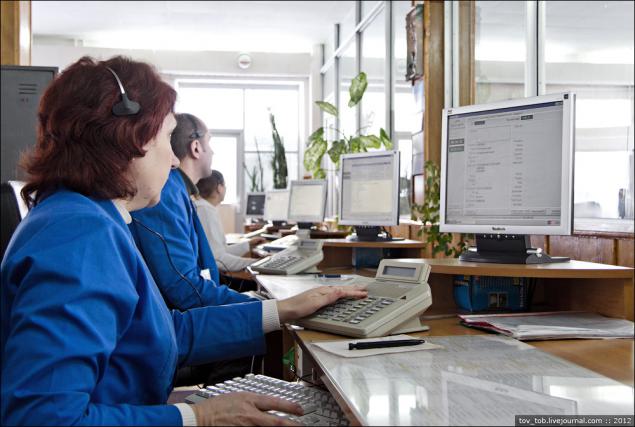
A call is received at the receiving controller complete responses to questions. Manager must finish the conversation by repeating the full address of the call, saying, "The challenge is accepted, expect soon."
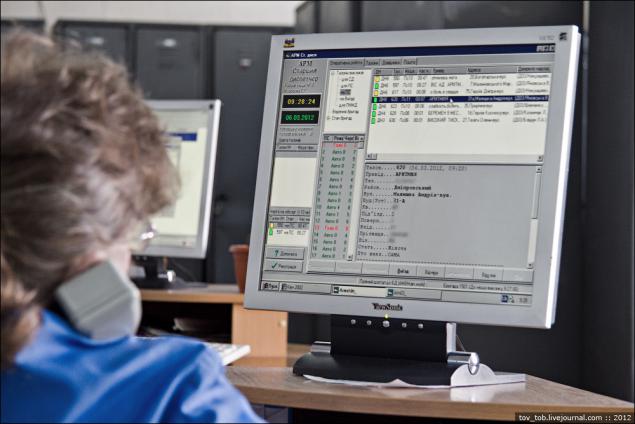
It should be understood that the first aid station primarily serves emergency calls: loss of consciousness, sudden respiratory distress, and pain in the heart, profuse bleeding of all kinds, all kinds of injuries, electric shock, heat stroke, poisoning, damage emergencies, disruption pregnancy, etc. Much more, ie exacerbation of chronic diseases, the implementation of scheduled appointments GP, fever, cough, sore throat, headache, high blood pressure, lung injury (when the patient may self-refer to the emergency room), the provision of dental care, removing ticks, etc. emergency call is not. Manager may refuse to accept the call, advising to contact the emergency room or the proper hospital, indicating their address and telephone number.
Unfortunately, not everyone understands why they refuse to grant it an ambulance and sent to the emergency room. These are two different services, and an attempt to combine 30 years ago in Kiev, an ambulance with the ambulance ended in failure: greatly decreased quality of ambulances and increased response time. There are people who, under the pretext of the "my son's ear hurts" clamoring for emergency crews out exactly the same and after persistent failure write threatening complaint. Yes, the problems of their loved ones, of course, the problems seem to be more important than strangers, but cases where due to the "ears" soon will not have time to really come to the emergency call, too, are. By the way, call an ambulance served, may again get into an ambulance, for example, if you need transportation to a medical institution patients who require emergency hospital care and support medical staff using a stretcher (not ambulance transports patients).
After completing the call, it is transferred to the card under the control of the second category of managers who passed on the call to the appropriate substation. They are also involved in the control of making calls and, if necessary, keeping in touch with the teams, in the case if, for example, it is necessary to clarify the whereabouts of the victim.
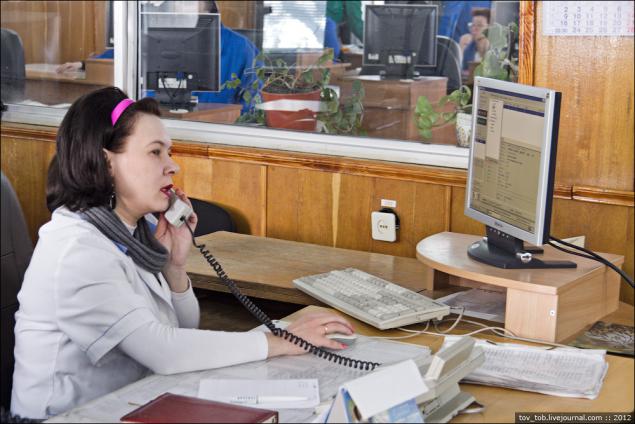
Calls are made in the order of their receipt. With priority to make calls in public places, streets, businesses, educational institutions. By the way, by phone 1503 (to Kiev), you can always find out the location of patients who were assisted ambulance (without diagnosis).
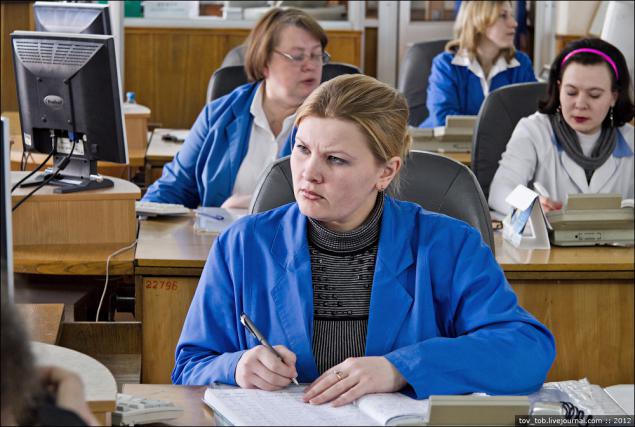
All calls that come into the control room, and recorded regularly tapped in resolving contentious issues and quality assurance receive calls. Monitoring the implementation challenges and work teams are very tough. When you think that the ambulance had insufficient medical care to the patient treated carelessly, he hinted or to demand payment for their work, you are entitled to know Name each team member, the call number and license plate number, and then make a complaint to the central station emergency.
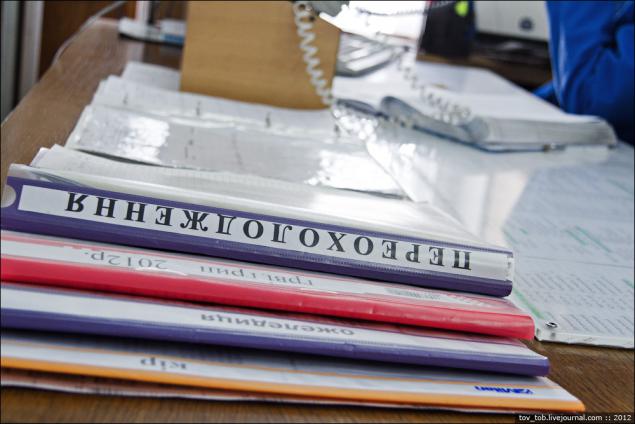
Then we'll go to the substation №5, which is on the street. Moscow look at the work of ambulance crews. When I tried to imagine myself will look like shooting, before the eyes of reason immediately floated pictures of half-dead patients in the oxygen mask on a litter, broken in an accident cars, racing with lights flashing and sirens on the streets, etc. dynamic thrash. But such megaaktivnost have emergency happens except in movies and in some state of emergency with a large number of victims. Of all the challenges the proportion of cases where the patient's life hangs in the balance, fortunately, takes very small percentage, and everyday fast look very different. After a total of one day with three emergency teams, I have not had a chance to get to the really difficult cases. But this does not mean that the rest of the brigade idle time and sip kofeёk on the porch near the substation. The control room is constantly receiving calls that require the participation of emergency, though such challenges are rarely ride with flashing lights.
The park ambulance still full of "Gazelle" and "Photon".

All this for a long time morally and technically out of date, and considering our roads, I'm just sorry for the patients who have to shake in a serious condition in older machines (although the "photon" problem especially in the engine, and here, for example, the body is made quite well) . But the question of a radical renewal of the car fleet as always rests on the budget (by the way, before the elections, first aid station received 21 new car).
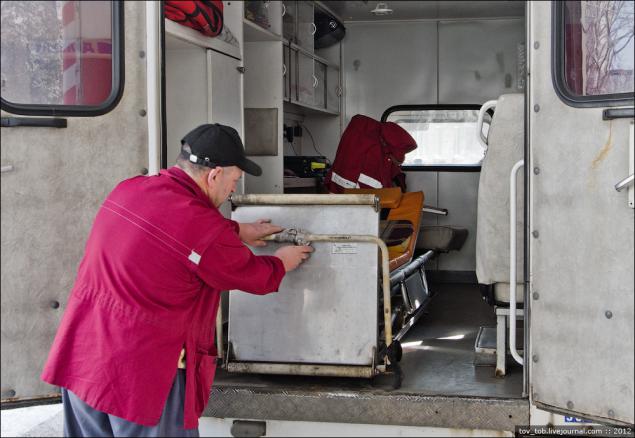
So, we leave to the substation. The first call on the street. Red Army. It is necessary to carry to the hospital granny very old age. It is not the first day of her fever, high blood pressure, she lives alone and also a neighbor, there is no one to look after her. Ambulance, which had been to her apartment shortly before us, has sent her to the hospital.

Grandma moved only with the help of others and looking at it as something suddenly very clearly understand that stories about lonely old people who have half of the pension is often spent on drugs - is not out there somewhere with someone, and all the time in the neighboring apartments and houses.
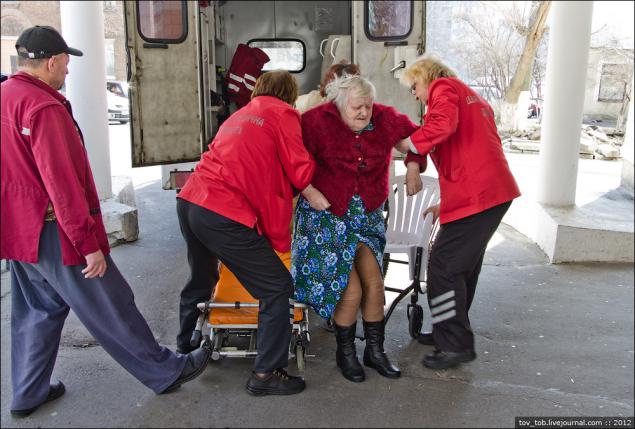
While this challenge is nothing special in itself does not carry - the usual routine for emergency, however, there is also need nerves, patience, and just have something to think about when you look at it from the outside ...

The mark of a call and call back to the substation to notify dispatchers:
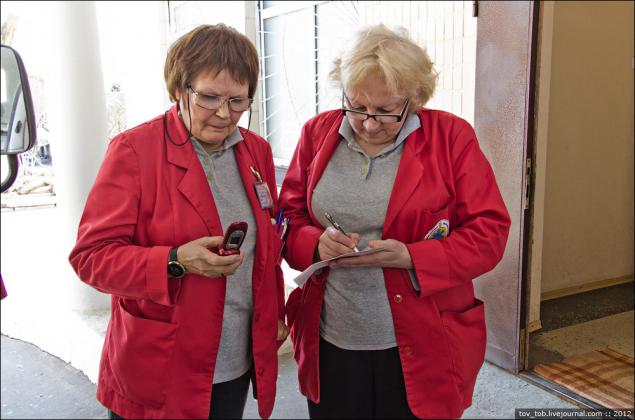
The next call again on Krasnoarmeyskaya.

One of the challenges of providing ambulance - plugs and culture of driving on our roads suffering. While the first part is a consequence of the second, the most "conscious" citizens who do not want to miss open ambulance and spit on all and sundry, the brigade "love" in a special way. Basically, the problem is sometimes also applies to pedestrians: he once witnessed a situation where a fire truck could not pass the intersection of pedestrians who are not paying attention to the siren and emergency lights, continued to move at a pedestrian crossing ... By the way, allowed the execution of emergency call within a city is defined as 10 minutes. Depending on weather and road conditions is allowed to increase the time by 10 minutes.
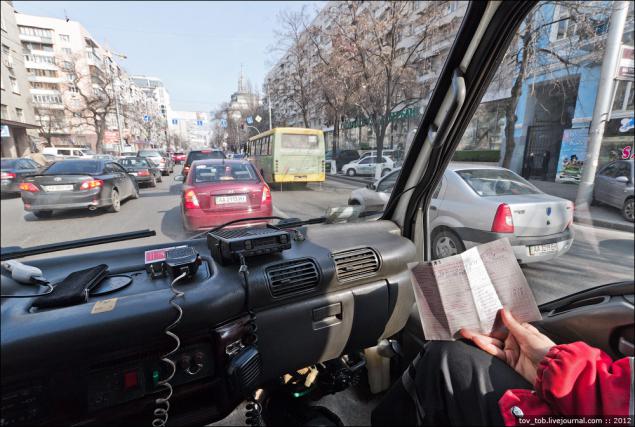
New call again require transport to the hospital. At this time, a fracture of the femoral neck and over a person of advanced age. There is not enough without a stretcher, but the brigade only two women and drag the stretcher with the victim until the machine is impossible. There is no place for filming therefore received confirmation from the team, together with a colleague hide cameras and going upstairs to help haul the litter. Generally, in such cases, usually called all sorts of neighbors and passers-by, is not in the right amount of volunteers. In the house in some places to turn is very hard, and the slightest wrong movements do not add to the patient joy.
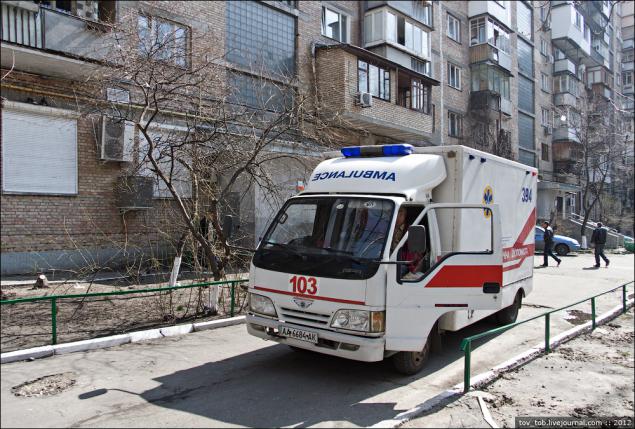
Once we started talking about the conditions of the first aid in our homes, it is useful to note that the life and health of the victim is also in the hands of calling an ambulance. Before the arrival of the brigade, it is important to take care of normal access to the victim. If there is a need and opportunity, you need to remove all interfering nafig, including different biting pets. This, like many other small items such as a pair of chairs, good lighting, etc., will help to speed up diagnosis of difficult cases and assisting the patient.
But back to our call. At this time, our final destination - a military hospital.

We shift the patient to a local wheelchair.
Source:
29 photo + accompanying text.

2. Kiev ambulance station this year celebrated 110 years - is one of the oldest medical institutions in the city and on the specifics of their work, the organizational and functional structure, methods of work - the first in Ukraine and among the top ten such institutions in Europe.
Brief History
The origin of emergency medical care in Kiev can be traced to 1881, when the Company's initiative was organized by the Kiev doctors' Circle doctors to a doctor's duty ", which in the same year opened on Khreshchatyk point night duty. It voluntarily attended two dozen doctors. Activity item was mainly a philanthropic character. Help in case of accidents and injuries is free, and paid visits.
Gradually, the number of complaints increased, and after some time the item was no longer able to meet the increasing needs of the people of Kiev in urgent need of assistance. In addition, some doctors refused unprofitable calls, while others were fired.
Thus, in the city of overdue problem of organizing a full ambulance station. And June 30 1902 (old style) on the money collected from the population at charity evenings, membership fees, donations from philanthropists, made the City Council in Kiev began operating ambulance station, then called the rescue. She is located in cramped and unsuitable premises of the house on the street. Pirogov, 6, which were equipped with desk, room duty doctors, ambulance, pharmacy, stationery, etc. On the opening day the station had before Austrian horse carriage, purchased with donations. Station staff then consisted of the doctor's staff (head of the doctors on duty and 8), 5 nurses, 3 cabbies, street sweeper, carrier and economy. Daily from 9 am to 23 pm 2 doctors on duty. On the night of 1 doctor remained on duty. Always ready in all weather conditions was a horse-drawn carriage, which in 1-2 minutes after the call for help to leave on a call. Her place immediately took another coach. In case of fire with a large number of victims at the scene were sent additional medical supplies, and convened all the staff station.
At the rescue station:

3. For the first six months of the station is made of 2 thousand. Out, in 1903 - 4, 5 thous., In 1905 - 5, 1 ths.
In 1913, the Company acquired on donations 4 car and asked the City Duma with a request to oblige all the crews in the city to release expensive cars and ambulances (previously this was only fire brigades). During the Civil War, during street fighting health professionals station actively provided assistance to the wounded. Despite the devastation, unemployment, hunger and lack of funding the ambulance Kiev continued to function. In 1919 he published a decree about nationalization of the ambulance station, but funding remained scanty. In this regard, Gubernia Executive Committee in 1923 has allowed the collection of donations among Kyiv residents and businesses in support of the ambulance, as well as to the paid transportation of patients.
Popularity ambulance is constantly increasing. If in 1924 was carried out 6, 3 thous. Visits, then in 1933 they were carried out for 16, 5 thousand. Available hardware has not given the possibility of further normal operation of the station and in the prewar years, organized the new control room. During these years, it originates the idea of specialization ambulances and in 1932 at the Kiev station was organized by the obstetric and in 1934 - Pediatric teams. In the postwar years, there are psychiatric, antishock, hematology, toxicology, pediatric and others. Specialized teams.
First aid station at the time of its placement on the street. Vladimir, 33 (1907-1912 gg.). Now at this point is the building of the SBU.

3. In 1940, at the station every day went 18 ambulances, worked 270 people, of whom 49 were doctors. It was carried out 53, 8 ths. Departures.
During the Nazi occupation the station was not working. Equipment, property, equipment, workshops, records have been looted or destroyed. Survived only room. After the liberation of Kiev in 1943, the station has resumed its work. She was isolated 1 truck and 1 wagon. Calls served mostly on foot. Station staff consisted of only 9 people. About 100 plant personnel were killed during the war. Everything had to start from the beginning ...
In-house team restored the station premises, workshops and garage. In 1945-46. the station received 11 trucks. Since 1948 began arriving ambulances GAZ-AA, and since 1953 - ZIM cars and buildings and structures. In this difficult time for the Kiev station staff is headed by Natalia Andreevna Lengauer. Under her leadership, the station has evolved into an advanced medical facility not only in Kiev but also in the FSU. The station had a weight and abroad. We came here to study and learn from the experience from many cities of Ukraine, the Union and other countries. Since 1960, Kiev ambulance station become Republican, and since 1965 - All-Union school of excellence.
Natalya Andreevna Lengauer:

4. Meanwhile, Kiev and grew more acute becomes the problem of the remoteness of the new residential community to the station. This is especially felt on the Left Bank. Through perseverance NA Lengauer in 1957 on the street. Diagonal (now Gagarina ave.) For the first time in Kiev organized substation ambulance (now the substation №2 on ul. Sergienko, 6). In subsequent decades, in Kiev offers more than a dozen stations, which are now in every area of the city. In 1977, the central station is divided into two sub-station: №1 and №13. Substation №1, which houses the control room, now located on the street. Bohdan Khmelnytsky, 37B, where it relocated in 1963. The new building was built on an individual project, had 42 rooms, a conference hall for 300 people, a library, dining room, dressing room, garage, car wash and unique at the time the central control room, Equipped with the latest equipment.
In 1962, an ambulance has provided 47 mobile teams of 5 for the year was carried out 323, 8 ths. Departures. In 1975 already it has been performed 556, 4 th. Exits (100 times more than the time of the station).
In the period from 1960 to 1990. It is spread each year from 5 to 15 new methods of diagnosis and treatment, and from 8 to 25 staff rationalization proposals station. Also employees of the station is constantly engaged in research activities. Their development and achievements have been the subject of a city, republican, union and international conferences. In 1987, at the Kiev station for the first time in the USSR became operational consulting and information service "Health».
We could continue to produce a variety of historical facts work Kiev station - a lot of them and many of them are worthy of attention, but let's stop at this and see "how it works" inside. Our journey begins in the central control room, located in the same building on the street. Bohdan Khmelnytsky, 37B, which come with phone calls rooms 103.
Actually, dispatch. This temporary space that dispatch occupied during the recent renovation.

While writing this post, I managed to finish the reconstruction and now looks dispatching space. The control room is divided into two parts: the managers directly receive calls, and controllers, to transfer the call to the ambulance substation, as well as working with teams.

Dispatcher receiving the call, asks a set of questions familiar to many. Competent call an ambulance can significantly reduce the time of arrival of the brigade, and save the life of the victim. Do not be lazy to answer questions and try to specify the manager the most specific cause of the call; obvious and useless answer about the status of the patient "Poor!" bears little information, as may be necessary to call a dedicated team, and the team itself better to know in advance what they will face. It is not recommended to entrust children to call an ambulance if you can call yourself. By the way, you can call an ambulance and by SMS, and fax, and email. Alternative channels serve primarily to allow emergency calls for people with disabilities hearing or speech.

A call is received at the receiving controller complete responses to questions. Manager must finish the conversation by repeating the full address of the call, saying, "The challenge is accepted, expect soon."

It should be understood that the first aid station primarily serves emergency calls: loss of consciousness, sudden respiratory distress, and pain in the heart, profuse bleeding of all kinds, all kinds of injuries, electric shock, heat stroke, poisoning, damage emergencies, disruption pregnancy, etc. Much more, ie exacerbation of chronic diseases, the implementation of scheduled appointments GP, fever, cough, sore throat, headache, high blood pressure, lung injury (when the patient may self-refer to the emergency room), the provision of dental care, removing ticks, etc. emergency call is not. Manager may refuse to accept the call, advising to contact the emergency room or the proper hospital, indicating their address and telephone number.
Unfortunately, not everyone understands why they refuse to grant it an ambulance and sent to the emergency room. These are two different services, and an attempt to combine 30 years ago in Kiev, an ambulance with the ambulance ended in failure: greatly decreased quality of ambulances and increased response time. There are people who, under the pretext of the "my son's ear hurts" clamoring for emergency crews out exactly the same and after persistent failure write threatening complaint. Yes, the problems of their loved ones, of course, the problems seem to be more important than strangers, but cases where due to the "ears" soon will not have time to really come to the emergency call, too, are. By the way, call an ambulance served, may again get into an ambulance, for example, if you need transportation to a medical institution patients who require emergency hospital care and support medical staff using a stretcher (not ambulance transports patients).
After completing the call, it is transferred to the card under the control of the second category of managers who passed on the call to the appropriate substation. They are also involved in the control of making calls and, if necessary, keeping in touch with the teams, in the case if, for example, it is necessary to clarify the whereabouts of the victim.

Calls are made in the order of their receipt. With priority to make calls in public places, streets, businesses, educational institutions. By the way, by phone 1503 (to Kiev), you can always find out the location of patients who were assisted ambulance (without diagnosis).

All calls that come into the control room, and recorded regularly tapped in resolving contentious issues and quality assurance receive calls. Monitoring the implementation challenges and work teams are very tough. When you think that the ambulance had insufficient medical care to the patient treated carelessly, he hinted or to demand payment for their work, you are entitled to know Name each team member, the call number and license plate number, and then make a complaint to the central station emergency.

Then we'll go to the substation №5, which is on the street. Moscow look at the work of ambulance crews. When I tried to imagine myself will look like shooting, before the eyes of reason immediately floated pictures of half-dead patients in the oxygen mask on a litter, broken in an accident cars, racing with lights flashing and sirens on the streets, etc. dynamic thrash. But such megaaktivnost have emergency happens except in movies and in some state of emergency with a large number of victims. Of all the challenges the proportion of cases where the patient's life hangs in the balance, fortunately, takes very small percentage, and everyday fast look very different. After a total of one day with three emergency teams, I have not had a chance to get to the really difficult cases. But this does not mean that the rest of the brigade idle time and sip kofeёk on the porch near the substation. The control room is constantly receiving calls that require the participation of emergency, though such challenges are rarely ride with flashing lights.
The park ambulance still full of "Gazelle" and "Photon".

All this for a long time morally and technically out of date, and considering our roads, I'm just sorry for the patients who have to shake in a serious condition in older machines (although the "photon" problem especially in the engine, and here, for example, the body is made quite well) . But the question of a radical renewal of the car fleet as always rests on the budget (by the way, before the elections, first aid station received 21 new car).

So, we leave to the substation. The first call on the street. Red Army. It is necessary to carry to the hospital granny very old age. It is not the first day of her fever, high blood pressure, she lives alone and also a neighbor, there is no one to look after her. Ambulance, which had been to her apartment shortly before us, has sent her to the hospital.

Grandma moved only with the help of others and looking at it as something suddenly very clearly understand that stories about lonely old people who have half of the pension is often spent on drugs - is not out there somewhere with someone, and all the time in the neighboring apartments and houses.

While this challenge is nothing special in itself does not carry - the usual routine for emergency, however, there is also need nerves, patience, and just have something to think about when you look at it from the outside ...

The mark of a call and call back to the substation to notify dispatchers:

The next call again on Krasnoarmeyskaya.

One of the challenges of providing ambulance - plugs and culture of driving on our roads suffering. While the first part is a consequence of the second, the most "conscious" citizens who do not want to miss open ambulance and spit on all and sundry, the brigade "love" in a special way. Basically, the problem is sometimes also applies to pedestrians: he once witnessed a situation where a fire truck could not pass the intersection of pedestrians who are not paying attention to the siren and emergency lights, continued to move at a pedestrian crossing ... By the way, allowed the execution of emergency call within a city is defined as 10 minutes. Depending on weather and road conditions is allowed to increase the time by 10 minutes.

New call again require transport to the hospital. At this time, a fracture of the femoral neck and over a person of advanced age. There is not enough without a stretcher, but the brigade only two women and drag the stretcher with the victim until the machine is impossible. There is no place for filming therefore received confirmation from the team, together with a colleague hide cameras and going upstairs to help haul the litter. Generally, in such cases, usually called all sorts of neighbors and passers-by, is not in the right amount of volunteers. In the house in some places to turn is very hard, and the slightest wrong movements do not add to the patient joy.

Once we started talking about the conditions of the first aid in our homes, it is useful to note that the life and health of the victim is also in the hands of calling an ambulance. Before the arrival of the brigade, it is important to take care of normal access to the victim. If there is a need and opportunity, you need to remove all interfering nafig, including different biting pets. This, like many other small items such as a pair of chairs, good lighting, etc., will help to speed up diagnosis of difficult cases and assisting the patient.
But back to our call. At this time, our final destination - a military hospital.

We shift the patient to a local wheelchair.
Source:






